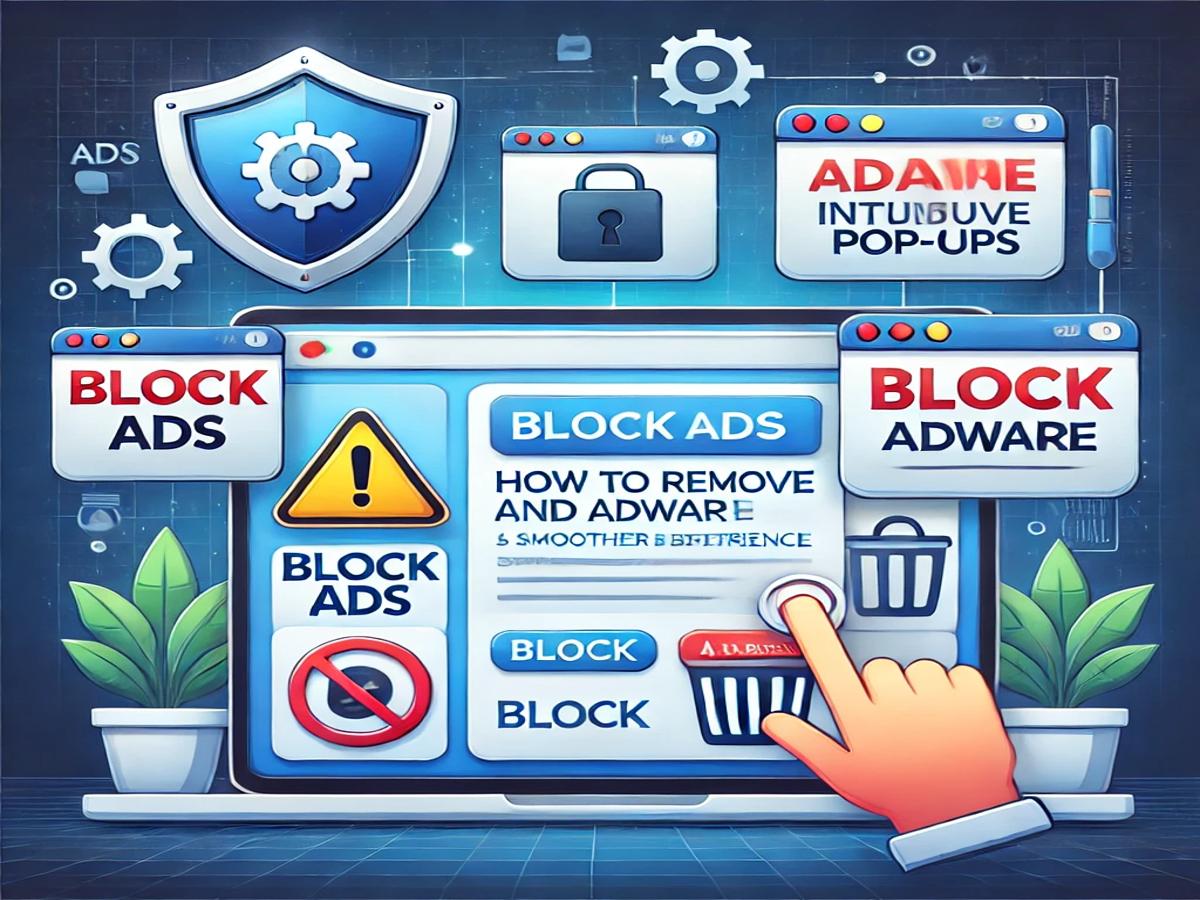Introduction
In today’s digital landscape, adware has become a significant nuisance for internet users. Imagine browsing your favorite website, only to be bombarded with endless pop-ups and intrusive ads. Adware is more than just an annoyance; it can compromise your privacy, slow down your device, and make your browsing experience frustrating.
This guide will help you understand what adware is, how to prevent it, and steps to remove it effectively, so you can enjoy a smooth, secure browsing experience. Here are some tools you can use.
Understanding Adware
How Adware Works
Adware, short for “advertising-supported software,” is a type of software designed to deliver advertisements to your device. It often sneaks into systems disguised as legitimate programs or bundled with free software. Once installed, it monitors your online activity, displaying ads tailored to your interests based on the data it collects.
Common Sources of Adware
Adware often comes from:
- Free Software Downloads: Many free programs bundle adware with their installations.
- Infected Websites: Clicking on suspicious links or visiting unsecured websites can introduce adware.
- Email Attachments: Malicious attachments in phishing emails may contain adware.
- Outdated Software: Vulnerabilities in outdated programs can be exploited by adware developers.
Signs Your Device is Infected with Adware
How do you know if adware has infiltrated your device? Here are some telltale signs:
- A sudden increase in pop-up ads.
- Unfamiliar programs installed on your system.
- Slow device performance.
- Changes to your browser’s homepage or search engine without permission.
- Frequent crashes or unusual behavior from your browser.
Preventing Adware: Best Practices
Regular Software Updates
Outdated software is a playground for cybercriminals. Regular updates ensure that security patches are applied, closing any loopholes that adware might exploit.
Installing Reliable Antivirus Software
An antivirus program acts as your first line of defense. Choose reputable software that offers real-time protection and regular scans for threats, including adware.
Being Cautious of Free Software
While free software can be tempting, it often comes with hidden costs like bundled adware. Always choose reputable sources and read the fine print during installation to avoid opting into adware.
Avoiding Suspicious Websites and Links
Stay vigilant while browsing. Avoid clicking on pop-up ads, suspicious links, or visiting unsecured websites. A reliable ad blocker can also help mitigate risks.
Tools to Prevent Adware
Browser Extensions for Adware Protection
Modern browsers support a variety of extensions designed to block adware and enhance security. Look for options like uBlock Origin or AdGuard.
Trusted Ad-Blocking Tools
Ad-blockers can significantly reduce the number of intrusive ads. Popular tools include AdBlock Plus and Ghostery, which are effective at filtering out adware-related content.
Built-In Security Features of Modern Browsers
Most modern browsers come with built-in tools to prevent adware. Enable features like pop-up blockers, privacy protection, and safe browsing to add an extra layer of security.
Removing Adware: Step-by-Step Guide
Manual Adware Removal
Uninstall Suspicious Applications:
- Go to your system’s settings and review the list of installed programs.
- Remove any applications you don’t recognize or remember installing.
Remove Browser Extensions:
- Check your browser’s extension manager.
- Delete any unfamiliar or suspicious add-ons.
Using Adware Removal Tools
Certain tools are specifically designed to target adware. Trusted options include:
- Malwarebytes
- AdwCleaner
- HitmanPro
Run a full system scan and follow the tool’s instructions to remove detected threats.
Resetting Browsers to Default Settings
If adware has altered your browser settings, resetting them can help. This process restores your browser to its default state, removing any malicious extensions or settings.
How to Stay Safe After Removing Adware
Creating Strong Passwords
Use unique, complex passwords for your online accounts. A password manager can help generate and store them securely.
Enabling Two-Factor Authentication
Two-factor authentication (2FA) adds an extra layer of security, making it harder for unauthorized users to access your accounts.
Regular Security Audits of Your Device
Perform routine checks on your system to ensure no malicious software has crept in. Schedule regular antivirus scans and review your browser settings periodically.
The Role of Education in Preventing Adware
Educating Yourself on Cybersecurity
Understanding the tactics used by cybercriminals can help you stay one step ahead. Familiarize yourself with common scams, phishing tactics, and the latest cybersecurity tools.
Teaching Others About Adware Risks
Share your knowledge with friends and family. Help them recognize the signs of adware and adopt preventative measures.
Conclusion
Adware can disrupt your online experience, but with the right tools and strategies, you can prevent and remove it effectively. Stay proactive by keeping your software updated, using reliable antivirus programs, and being cautious online. Remember, a secure browsing experience starts with you.
FAQs
1. What is the difference between adware and malware?
Adware specifically delivers unwanted advertisements, while malware includes a broader range of malicious software, such as viruses, ransomware, and spyware.-
2. Can adware harm my computer?
Yes, adware can slow down your device, compromise your privacy, and in some cases, open the door for more serious malware infections.
3. Are free adware removal tools safe?
Most reputable free tools like Malwarebytes and AdwCleaner are safe. However, always download them from the official website to avoid fake versions.
4. How do I know if a website is safe to browse?
Look for a secure connection (HTTPS) and avoid websites with excessive pop-ups or questionable content.
5. Is it possible to avoid adware completely?
While it’s hard to eliminate the risk entirely, following best practices and using protective tools can greatly reduce your chances of encountering adware.
















